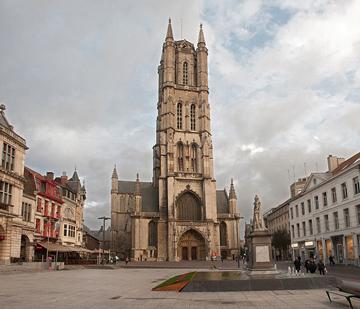Walls made of human bones discovered under Ghent cathedral
At a cathedral in Belgium, Gruesome walls made entirely of human bones were uncovered.
Specialists believe that in the 17th century, grisly structures were constructed using bones 200 years old at the time.
The legs and shiny bones of various people were entirely made from various adults. Spaces were filled with skulls between the wall, many of which were shattered

Archaeologists from Ruben Willaert bvba in Bruges said the find was unique to Belgium, the Brussels Times reported.
“This is a phenomenon we’ve not yet come across here,” said project leader Janiek De Gryse.
The discovery was made at Saint-Bavo’s cathedral in the city of Ghent. The building has been in use for more than a thousand years. Similar structures made using human remains have been found at ancient sites across Europe, including the catacombs of Paris.
Researchers said the Saint-Bravo bones appeared to date to the late 15th Century.
“For the moment we would place the actual construction in the 17th and 18th century,” De Gryse said, “although there’s a great deal of research still to be done.”
The walls of bones appear to have been built during a time when the graveyard was being cleared. It’s possible that the structures were pieced together while workers dug up old graves to make way for new ones.
“When clearing a churchyard, the skeletons cannot just be thrown away,” De Gryse explained.
“Given that the faithful believed in a resurrection of the body, the bones were considered the most important part.
“That is why stone houses were sometimes built against the walls of city graveyards: to house skulls and the long bones in what is called an ossuary.”

In other archaeology news, a fossil hunter has found pieces of Jurassic history encased in golden-snitch-like spheres. Hitler’s secret vegetable garden has been uncovered at a bunker in Poland.
And, the face of a 1,000-year-old Viking warrior woman with a gruesome battle wound across her skull has been revealed.





